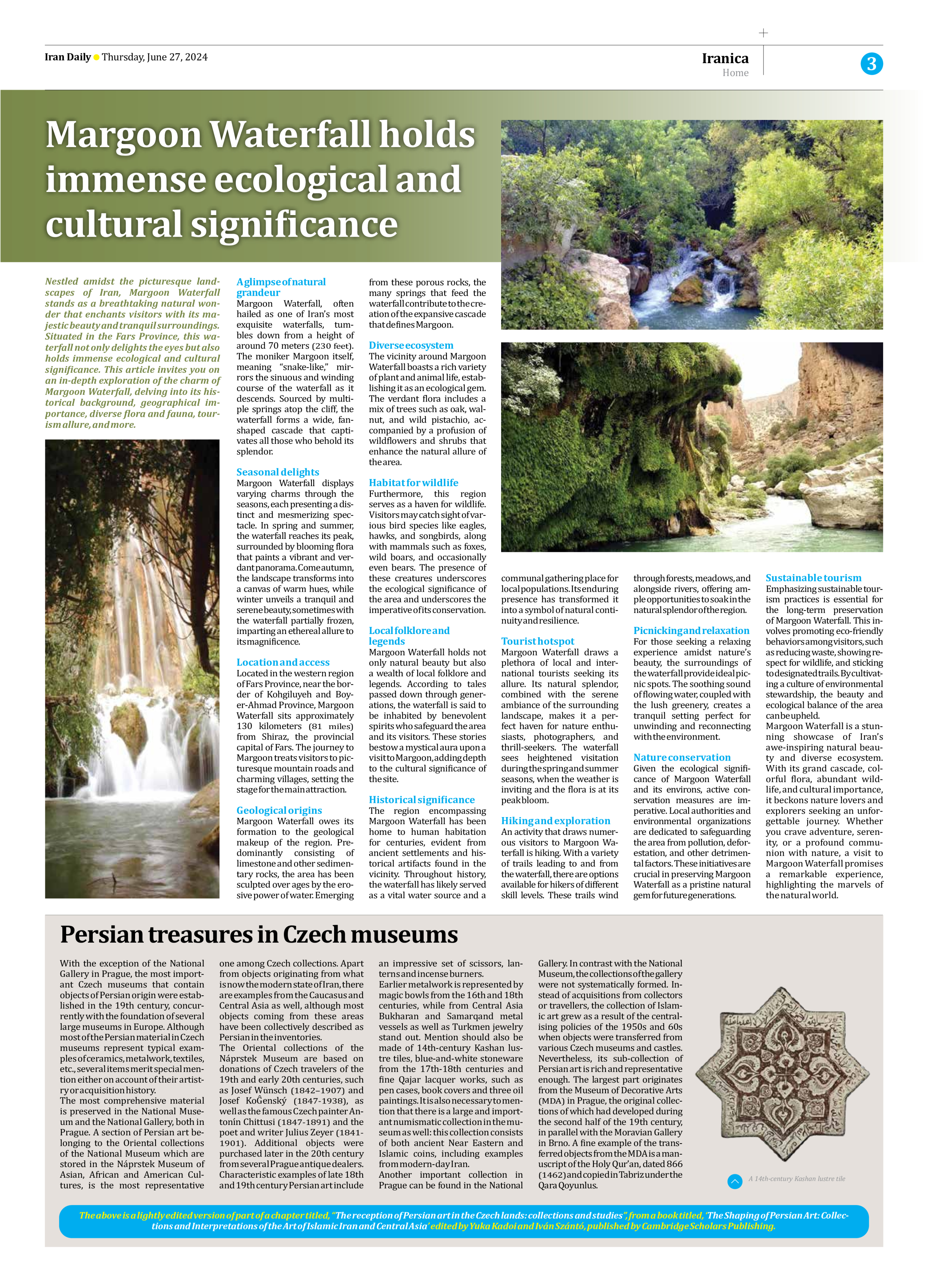
Persian treasures in Czech museums
With the exception of the National Gallery in Prague, the most important Czech museums that contain objects of Persian origin were established in the 19th century, concurrently with the foundation of several large museums in Europe. Although most of the Persian material in Czech museums represent typical examples of ceramics, metalwork, textiles, etc., several items merit special mention either on account of their artistry or acquisition history.
The most comprehensive material is preserved in the National Museum and the National Gallery, both in Prague. A section of Persian art belonging to the Oriental collections of the National Museum which are stored in the Náprstek Museum of Asian, African and American Cultures, is the most representative one among Czech collections. Apart from objects originating from what is now the modern state of Iran, there are examples from the Caucasus and Central Asia as well, although most objects coming from these areas have been collectively described as Persian in the inventories.
The Oriental collections of the Náprstek Museum are based on donations of Czech travelers of the 19th and early 20th centuries, such as Josef Wünsch (1842–1907) and Josef KoĜenský (1847-1938), as well as the famous Czech painter Antonín Chittusi (1847-1891) and the poet and writer Julius Zeyer (1841-1901). Additional objects were purchased later in the 20th century from several Prague antique dealers. Characteristic examples of late 18th and 19th century Persian art include an impressive set of scissors, lanterns and incense burners.
Earlier metalwork is represented by magic bowls from the 16th and 18th centuries, while from Central Asia Bukharan and Samarqand metal vessels as well as Turkmen jewelry stand out. Mention should also be made of 14th-century Kashan lustre tiles, blue-and-white stoneware from the 17th-18th centuries and fine Qajar lacquer works, such as pen cases, book covers and three oil paintings. It is also necessary to mention that there is a large and important numismatic collection in the museum as well: this collection consists of both ancient Near Eastern and Islamic coins, including examples from modern-day Iran.
Another important collection in Prague can be found in the National Gallery. In contrast with the National Museum, the collections of the gallery were not systematically formed. Instead of acquisitions from collectors or travellers, the collection of Islamic art grew as a result of the centralising policies of the 1950s and 60s when objects were transferred from various Czech museums and castles. Nevertheless, its sub-collection of Persian art is rich and representative enough. The largest part originates from the Museum of Decorative Arts (MDA) in Prague, the original collections of which had developed during the second half of the 19th century, in parallel with the Moravian Gallery in Brno. A fine example of the transferred objects from the MDA is a manuscript of the Holy Qur’an, dated 866 (1462) and copied in Tabriz under the Qara Qoyunlus.







